Having just installed a new ham radio setup to get APRS, I was keen to play with Kenwood TM-D710GA and Mobilinkd to track my location. So, on a few local trips, I turned everything on and waited.
And waited and waited. Over the course of 30 minutes, I never got a single APRS beacon from another station. I knew something was wrong.
And then I realized that the difference between my initial setup and my current situation was that the truck was on. Turning the truck off resulted in almost immediate APRS packets coming through. Crap, something is causing interference - what could it be?
So I turned key to the ACC position - and boom, no more packets. Well, at least I eliminated pretty much everything in the engine bay! It had to be something in the dash.
Yeah, it had to be my Joying head unit. See, it's an off-brand, Chinese stereo that runs Android, and has a number of radios - AM/FM, WiFi, Bluetooth, GPS, etc.
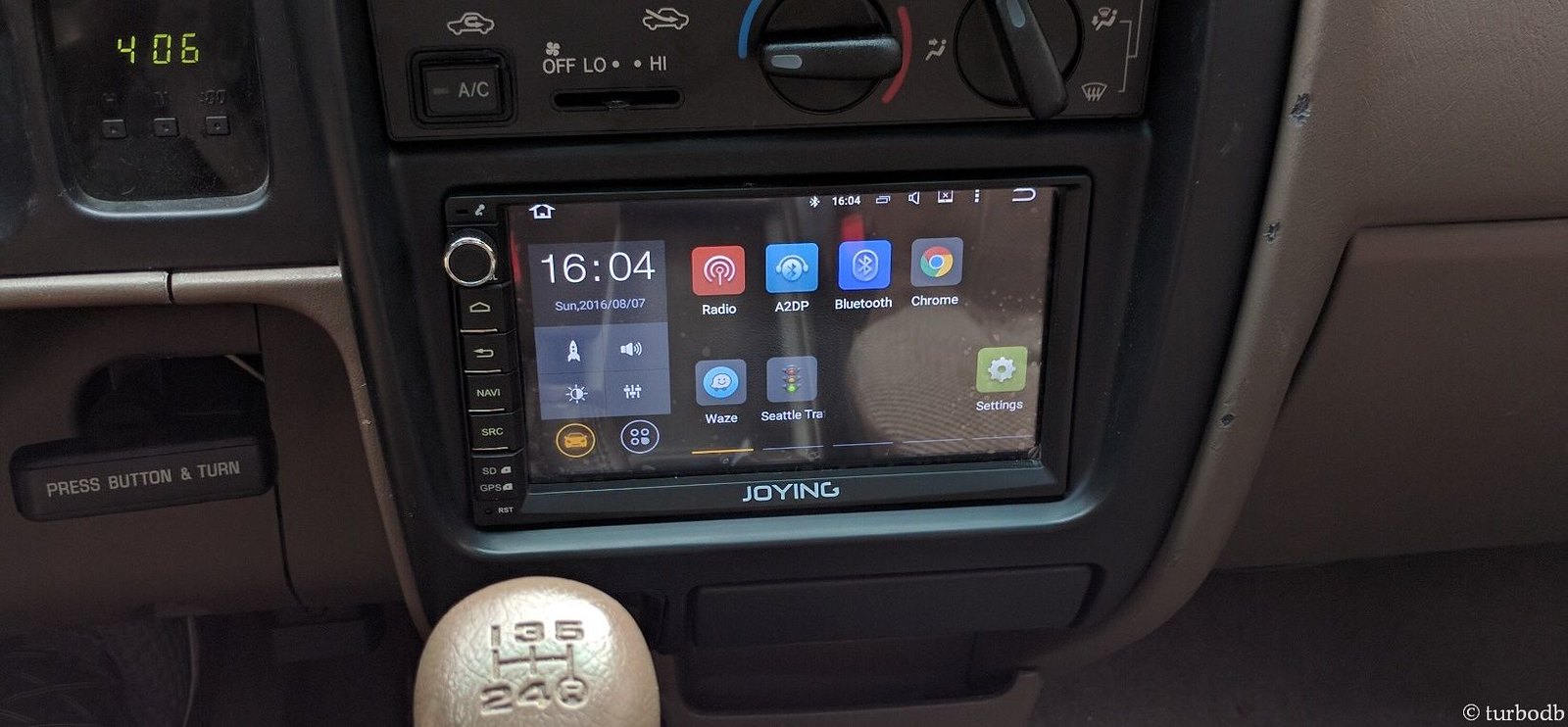
I was sure the Joying head unit was at fault.
I immediately tried airplane mode, and wasn't surprised that nothing changed - I figured that "airplane mode" in this unit might be implemented by ignoring the radio signals, rather than actually turning them off. At any rate, whenever the stereo was on, there was so much RFI that APRS didn't work at all. In fact, even the local weather (WX) stations would become static.
In the end, I knew I was in over my head, and headed back home to ask a few ham radio experts I knew, what I should do.
Their recommendation was twofold:
- Get a handheld ham radio, tune to the APRS frequency (144.390) and move the radio around the head unit (to find where the RFI was being emitted from).
- Make sure the stereo was well grounded, and that the ham radio was well grounded and shielded.
I tackled the second recommendation first - I installed ferrite beads on the ham radio, and I made sure that both the ham radio and the stereo had a good ground. It made no difference.
So I ordered a handheld, and waited.
The day before it was to arrive, I thought I'd go open up the dash - so it was easier to get at the stereo when the HT arrived. I thought I could also verify that it was the stereo by disconnecting the wiring harness, but still having the ignition in ACC - thereby eliminating everything else on the ACC/ON circuits.
So I got the ham radio and TNC up and running, and made sure APRSDroid was parsing stations. Then I turned the ignition to ACC, expecting everything to get really noisy/static-y. It didn't.
I confirmed that the stereo, tablet, my phone, etc. were all in the same config as previous (i.e. really noisy - BT and WiFi on, hotspot on from my phone) - they were.
Finally, I thought - "last time the tablet was charging via USB" so I plugged it in to the USB ports that I put in place of my cigarette lighter. BOOM - noise everywhere; just like before, I couldn't even tune WX on the second band of the ham.
That was good news! Rather than buy a new stereo, I'd just need to solve the interference problem of the Blue Sea Systems 1016 USB charger that I'd installed in place of my cigarette lighter back in 2015.
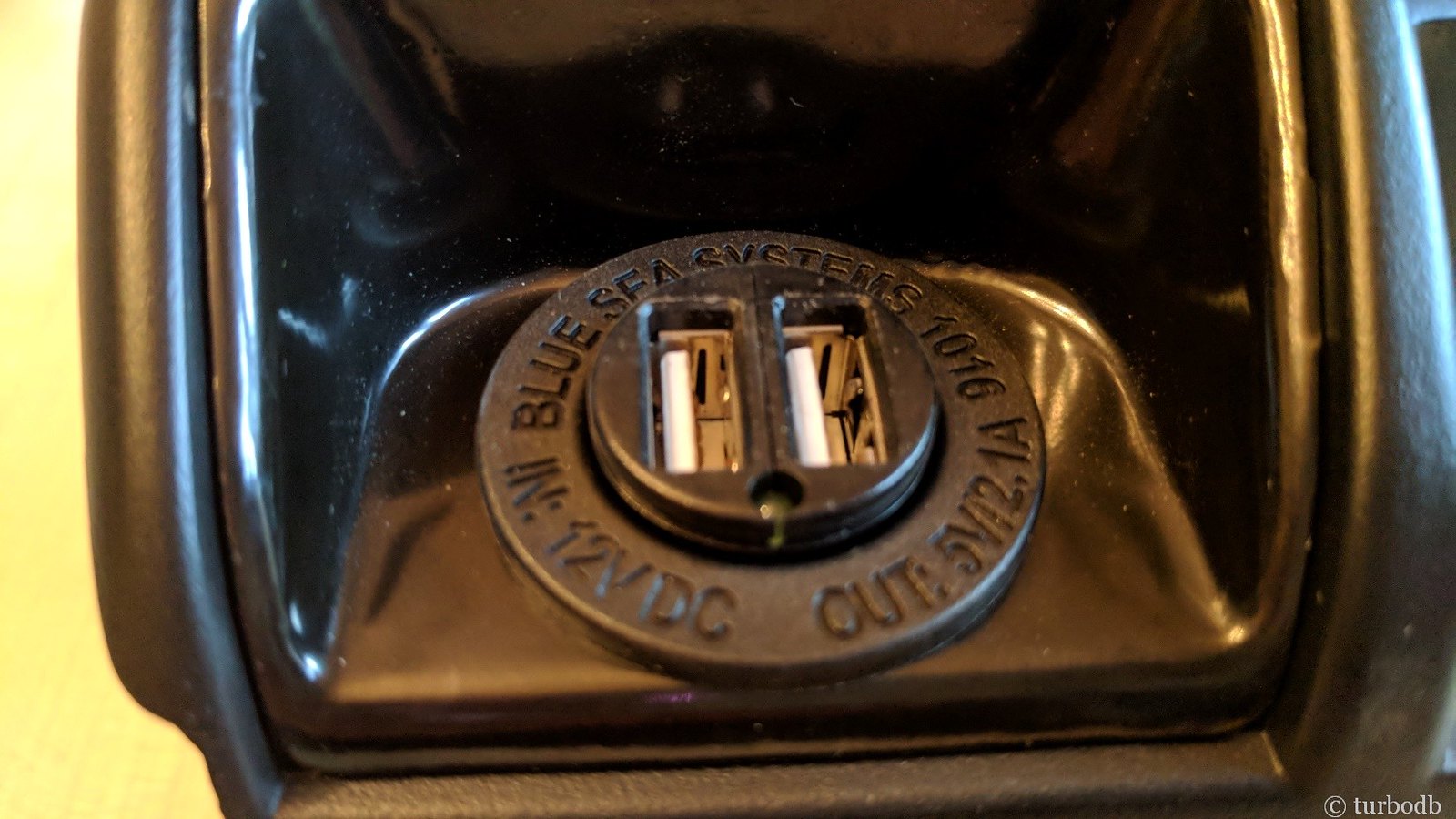
Perfect fit.
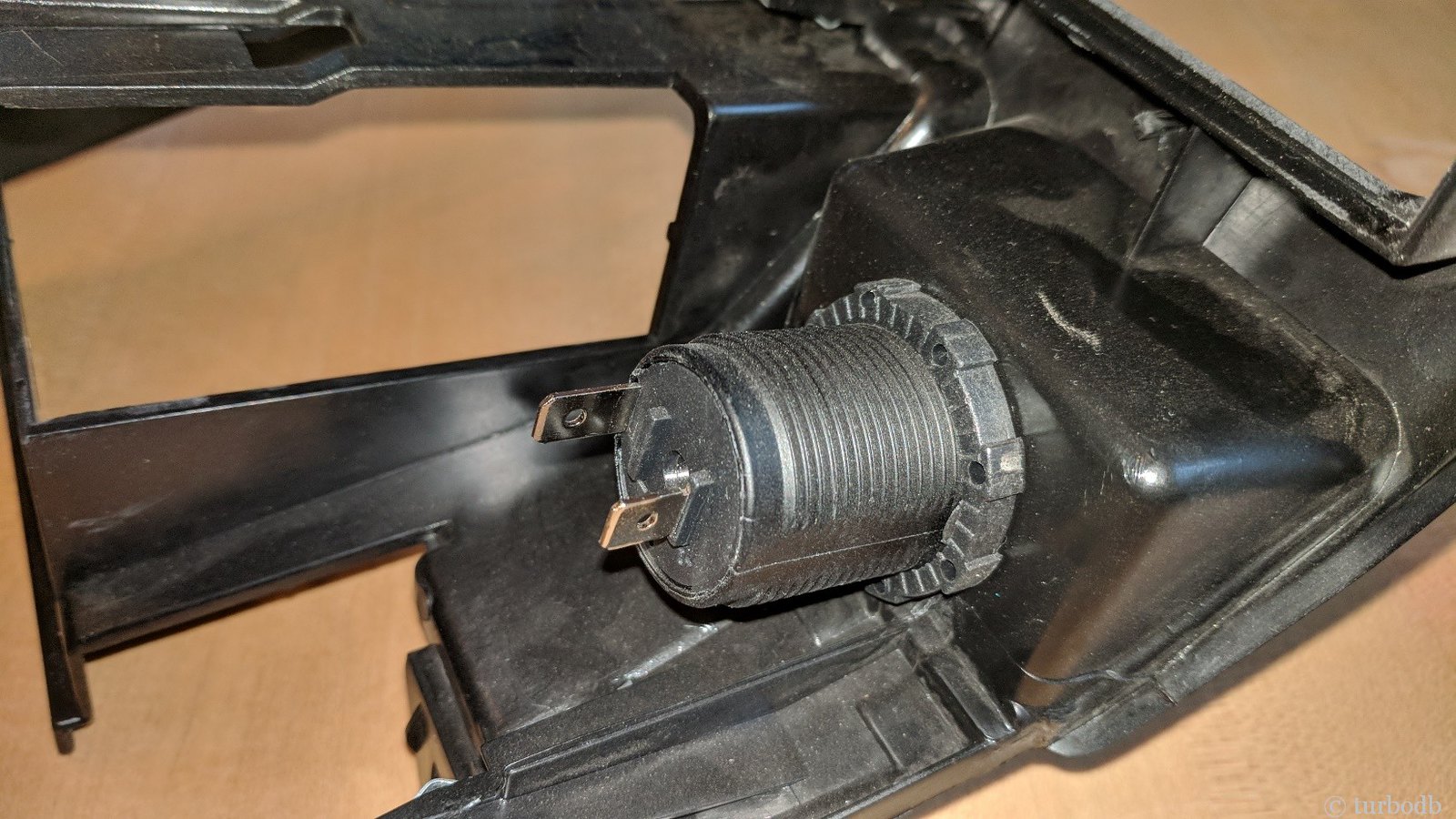
A convenient (and useful) replacement for the cigarette lighter; I could even use the same OEM connector to power it.
So I fired off an email to Blue Sea Systems, asking if they knew about any RFI issues with the 1016 USB charger, and what they recommended in order to fix the problem. I got a great response from Kevin:
…The 1016 did pass the FCC part 15 testing for interference. But honestly that bar is pretty low. We endeavored to engineer a in-house design with much improved interference filtering. The 1045 will likely help…
Ultimately after a bit of troubleshooting, he kindly sent me a 1045 USB charger for free to try to solve the problem - now that's some awesome customer service! (thanks Kevin!)

The 1016 on the left has high RFI; the 1045 on the right has *no* RFI as far as I can tell.
Before installing it in the dash, I verified that I could charge devices with it and APRS would still work (it did!); then it was as easy as unscrewing the retaining clip on the 1016 and inserting the 1045.
RFI mystery solved! Communication center complete!
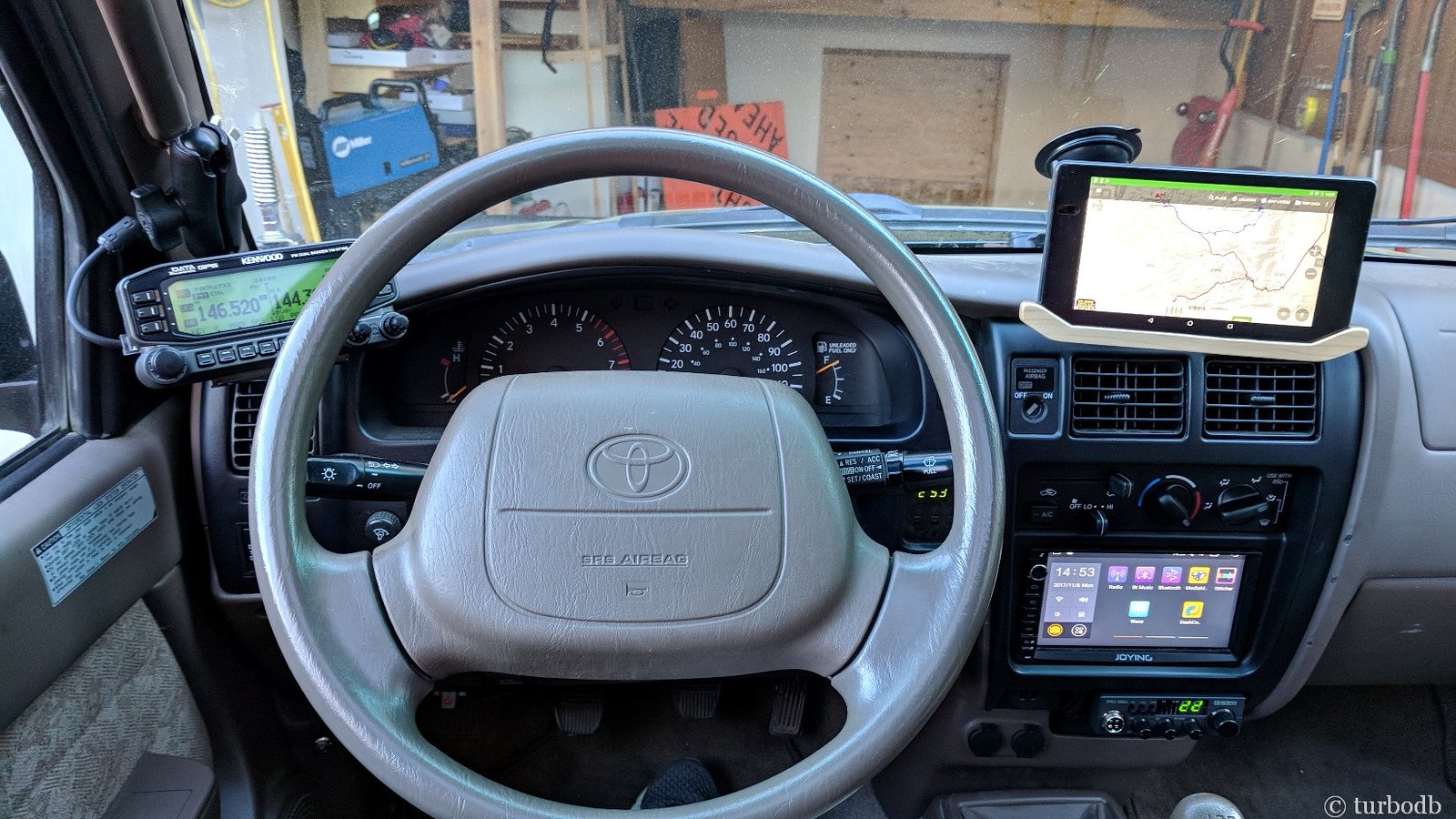
In this Series


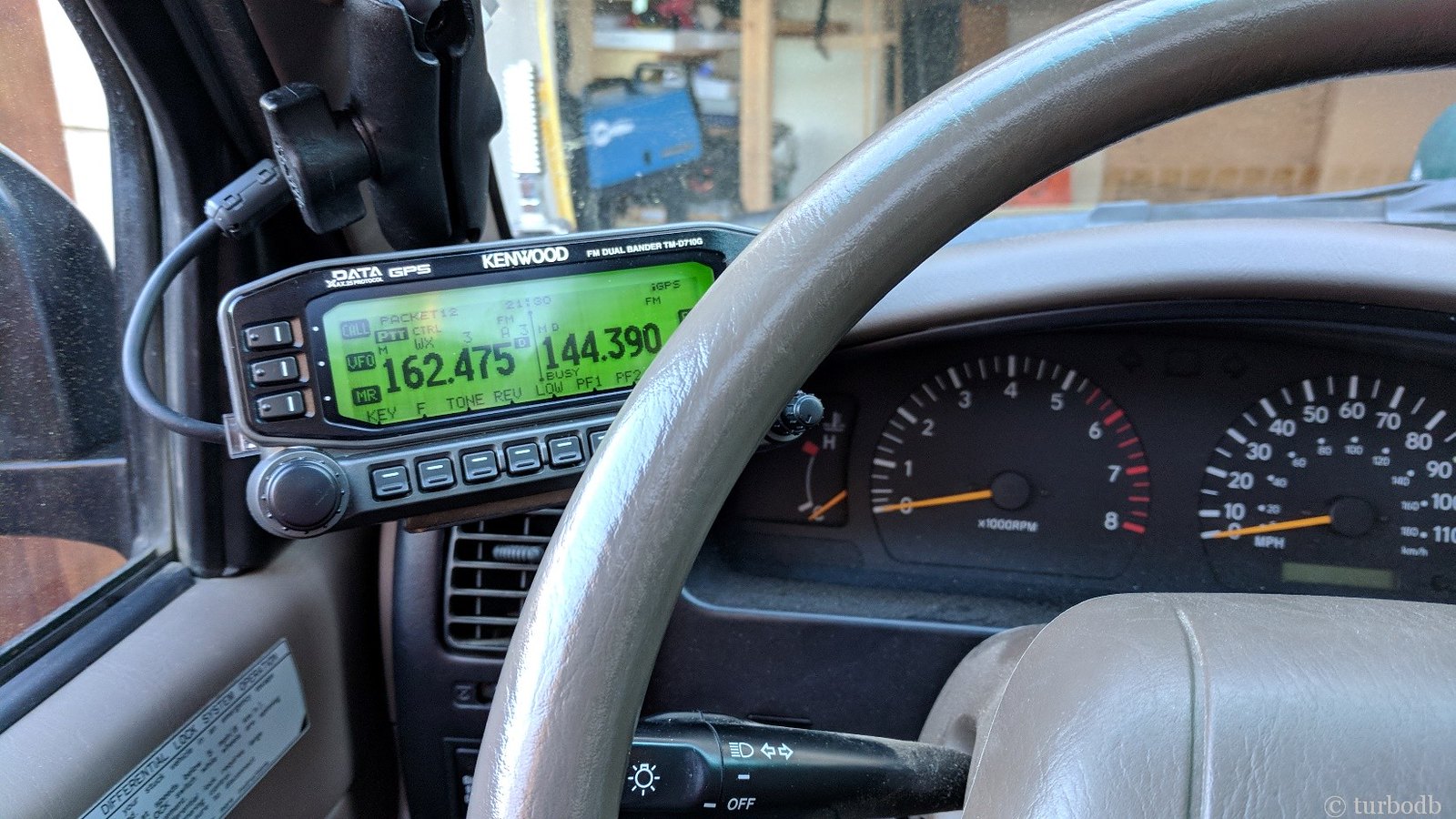
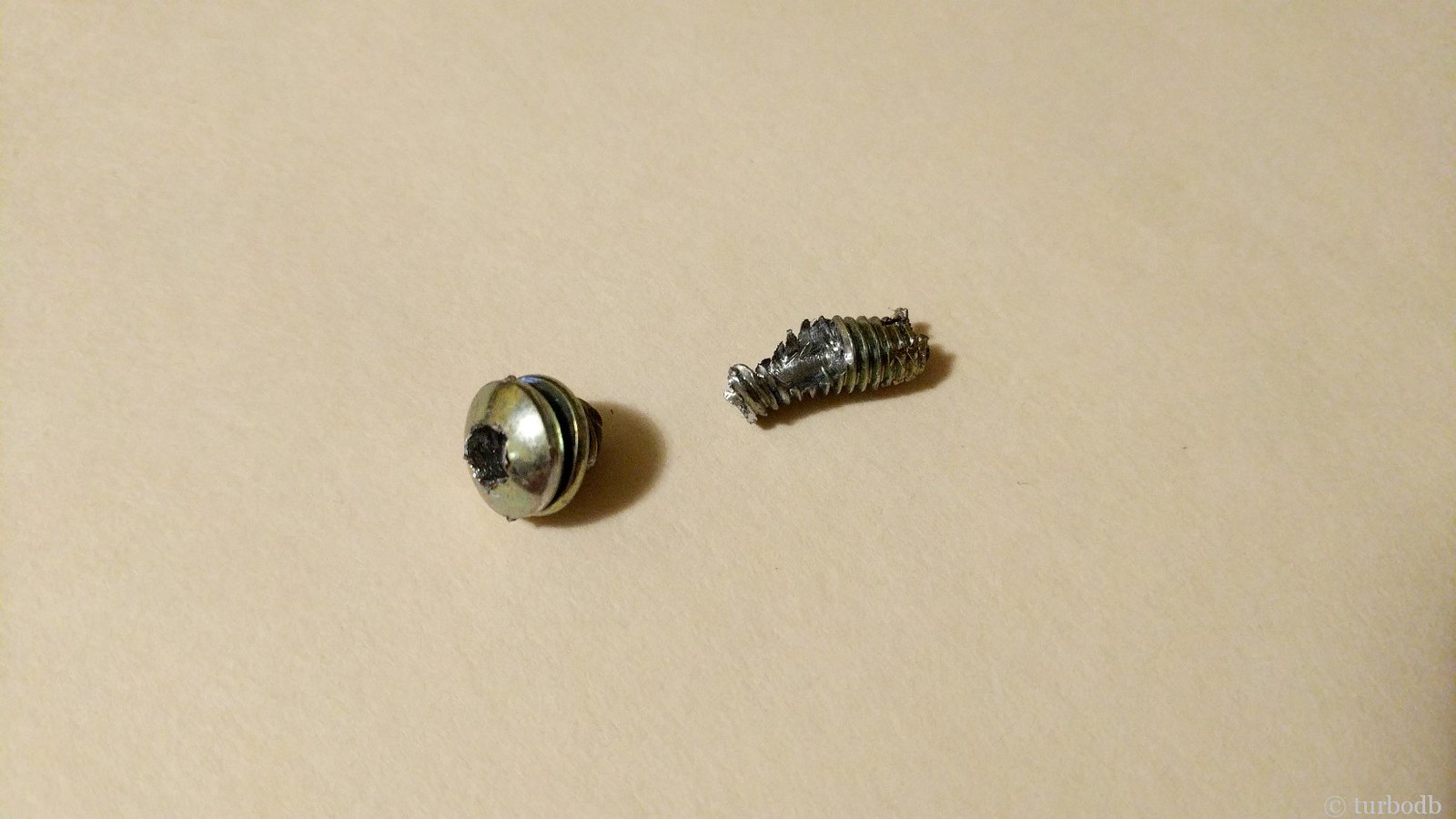



Hey Dan,
Another question for you, this time about USB chargers. Do you think your 1016 charger would cause RFI problems if it was in the back seat area (the rear bulkhead trim in a quad cab to be specific) and if it was in the bed. I ask because I have a Blue Sea panel with a DC socket and a 1016 USB charger mounted inside my topper and I was going to add another 1016 in the trim piece that is behind the rear seat. I’m wondering if I should just go ahead an order 2 1045s now before I get my Ham radio mounted. I’m still studying for the test so it’s not a priority right now but I’m planning ahead. Thanks..
Hey Blevin, Generally speaking, the way the RFI works is that anything on the same electrical system sends noise through the entire system, unless it's isolated somehow. The most common method of isolating is to use ferrite beads, but I've had mixed results with those, and (for me) they didn't work with the 1016 USB charger. So, from that perspective, my suspicion is that you'd still have RFI even with the USB charger located further away from the radio than mine was.
There are a couple options though...since I know the price difference between the 1016 charger and 1045 charger are not small.
Anyway, I guess my recommendation would be to get a 1045 charger for your primary day-to-day charging - i.e. the thing you'll conveniently mount in the dash somewhere - but then use switched 1016 chargers for "in-camp-USB" since they are quite a bit cheaper. That is, as long as you're OK with them being switched.
Hope that helps!